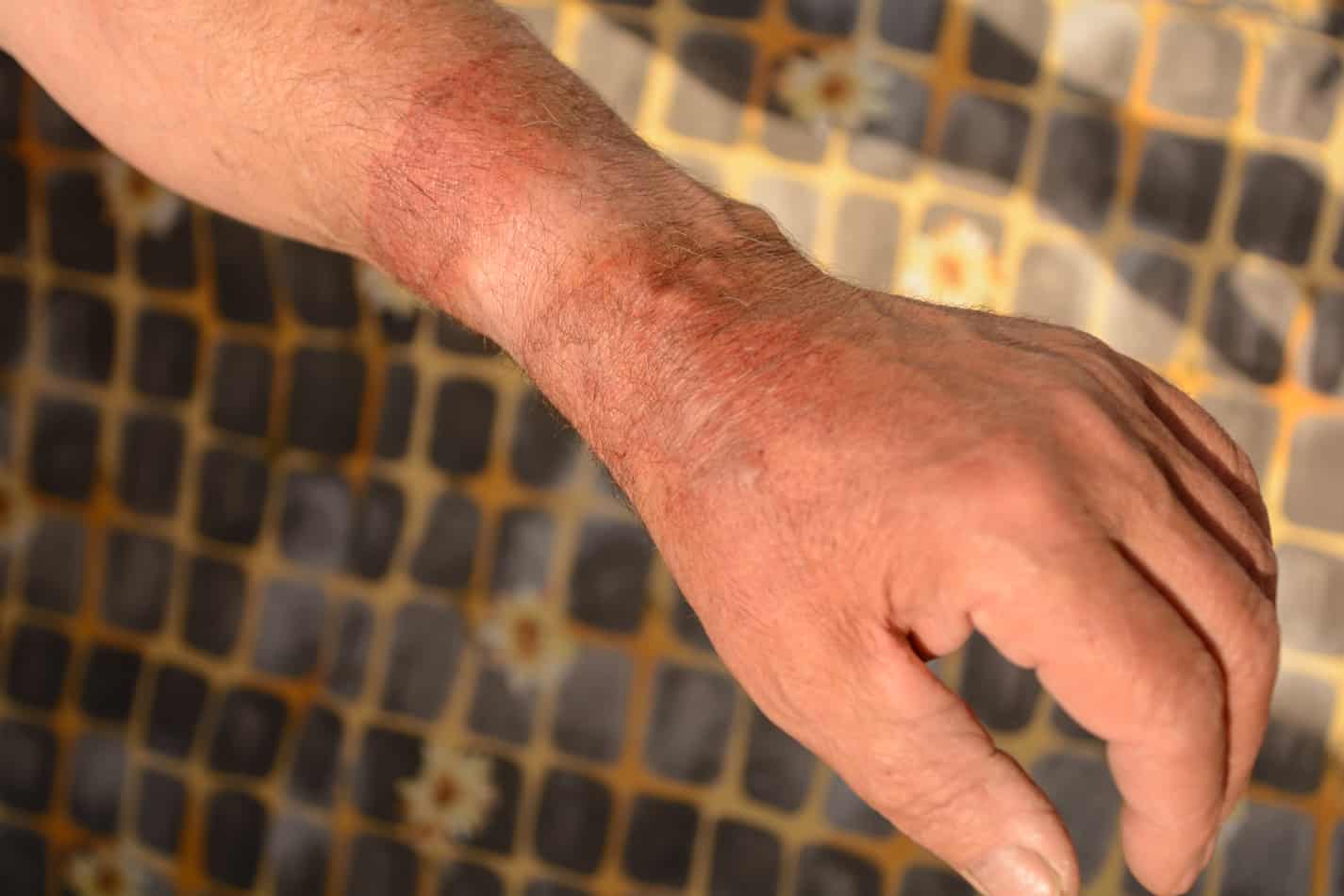“This post contains affiliate links, and I will be compensated if you make a purchase after clicking on my links.”
Burns is a danger in many fields of work, but how can you specifically guard against and treat burns from welding work? These can be some of the most severe burns, leaving permanent scars. It’s essential to not only know how to prevent them but also how to treat them should they occur.
How do you prevent and treat welding burns? Prevention is done by regularly checking and replacing gear while treating welding burns is similar to treating most other kinds of burns, with burn creams, regular cleaning, and keeping it wrapped to prevent infection.
Different welding tools can leave different burns, such as arc welding. It’s important to know what kind of prevention is available on the market for you. Prevention refers to any gear you wear, use, or have near you to protect yourself from welding burns.
Best Prevention and Aftercare of Welding Burns
The best prevention of welding burns is much the same as avoiding other burns. You must always be aware of your surroundings, be it the torch, what you’ve just welded, welders around you, and any major sparking.
Along with being observant and aware, you have to make it a common practice to wear all your gear and examine it regularly for any rips or tears. Even the best gear won’t protect you if it’s too old or worn out.
The aftercare of welding burns varies on the severity of it. If you’re ever concerned over what appears to be a severe burn, you should always go to the hospital to be seen by a doctor. Smaller burns can be dealt with using basic first of cold water, burn spray or ointment, and covered.
How to Deal with Arc Welding Burns
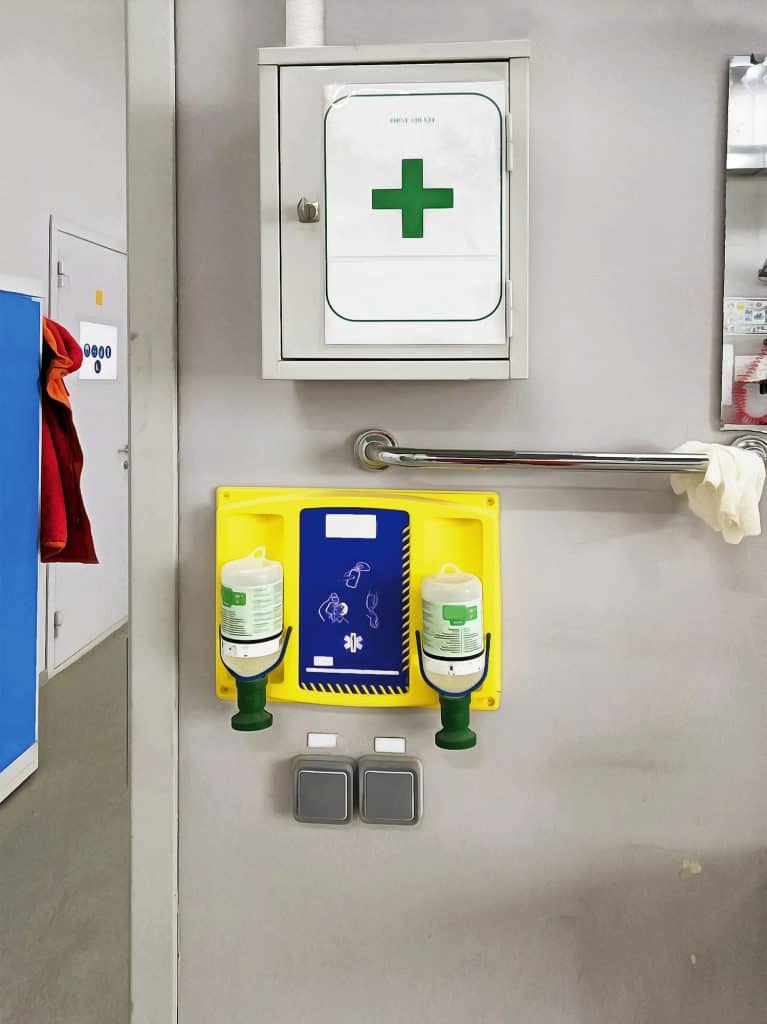
Many welding burns are caused by basic hot materials or fire touching the skin, but in cases involving a process called arc welding, it’s a bit different. This is because arc welding uses a heat source that emits UV rays, which leaves you with a burn more similar to sunburn than typical burn.
You must get out of the heat. This means getting away from the job site and getting out of your gear to allow the burn to breathe. You can also check your burn and start the aftercare of it. If you notice any blistering, you should go to the doctor, as it’s passed 2nd degree, just as with other burns.
Keep your burn either under running water, which is optimal as it’s cleaner or in water. If you choose to leave your burn in water, make sure you clean it thoroughly beforehand. If your burn isn’t blistering, you can treat it at home if you feel comfortable not seeing a doctor.
Essentially, this is a bad sunburn and should be treated the same. Use healing creams specifically for sunburns or burns to soothe and heal them. You should protect your wound if it’s severe enough with wrappings changed twice daily. Take pain killers and use medicated pain cream as needed.
How Long Do Welding Burns Caused by Arc Welding Last?
Now that we know arc welding causes other kinds of burns than other welding, how long do these burns last? Arc welding burns are also called ‘welder’s flash’ because of how quickly they heal. They only take between a day and two, unless they’re severe like a sunburn would.
This is because arc welding burns are similar to sun rays in that a UV light has been burned. With severe sunburns or arc welding burns, you may experience blistering and need to go to the hospital. However, in most cases, sunburns or arcing welding burns heal quickly.
The best course of action to an arc welding burn, unless it outwardly shows signs of being worse than a second degree or worse burn or becomes infected, is to wait it out simply. Arc welding burns don’t typically take long to disappear or at least begin to heal, so don’t worry too much.
The only thing to keep an eye out for is an infection. However, regular cleaning should prevent this. You should clean your wound at least once a day, if not more.
The Best Prevention of Welding Burns
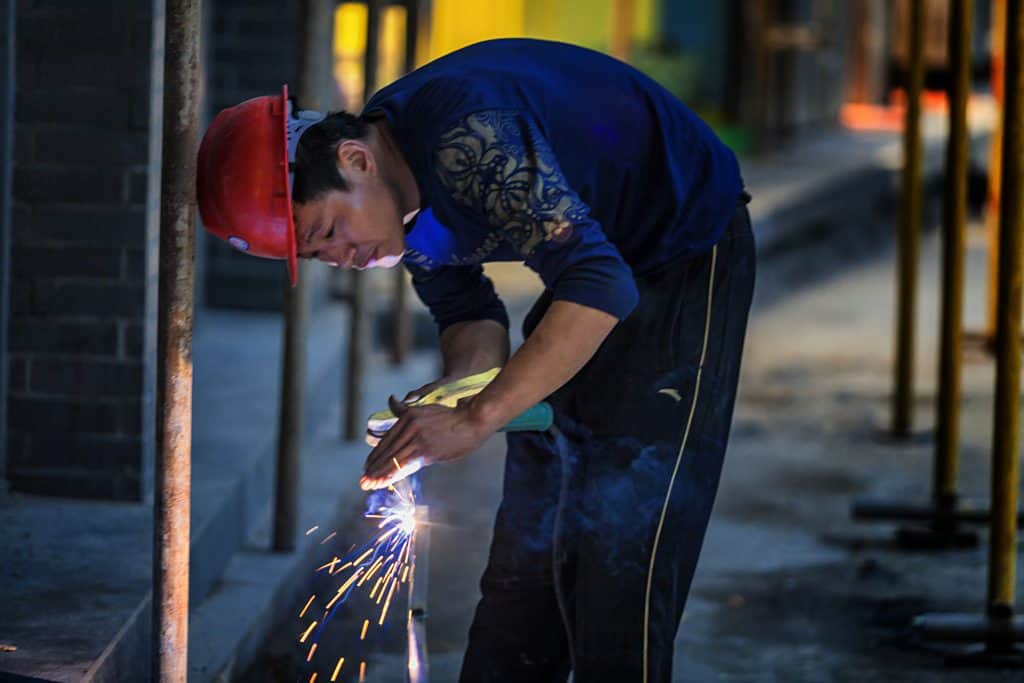
Welding burns can be prevented in a variety of ways. It’s essential to use each fully to your advantage to keep yourself and your crew safe. It’s on the foreman to watch over his team and make sure they’re keeping up on prevention to keep them safe.
Protective gear worn daily should be up to standard. That means no holes, no cracks, and no rips, or else someone may end up hurt. If the gear you’re wearing isn’t up to par, your crew risks getting hurt much easier. Read below about just what you should be wearing.
There are also things you need to avoid to prevent welding burns. These things include lighters, matches, or anything else, combustible. There are also things to be aware of related to your clothing to avoid. Read under the following section for a full list.
Finally, you have to remember everything. This can be difficult, especially for newbies. That’s why it’s so crucial for forepersons, and older, more experienced crew members must educate them firmly on proper burn prevention habits.
What to Wear to Prevent Welding Burns
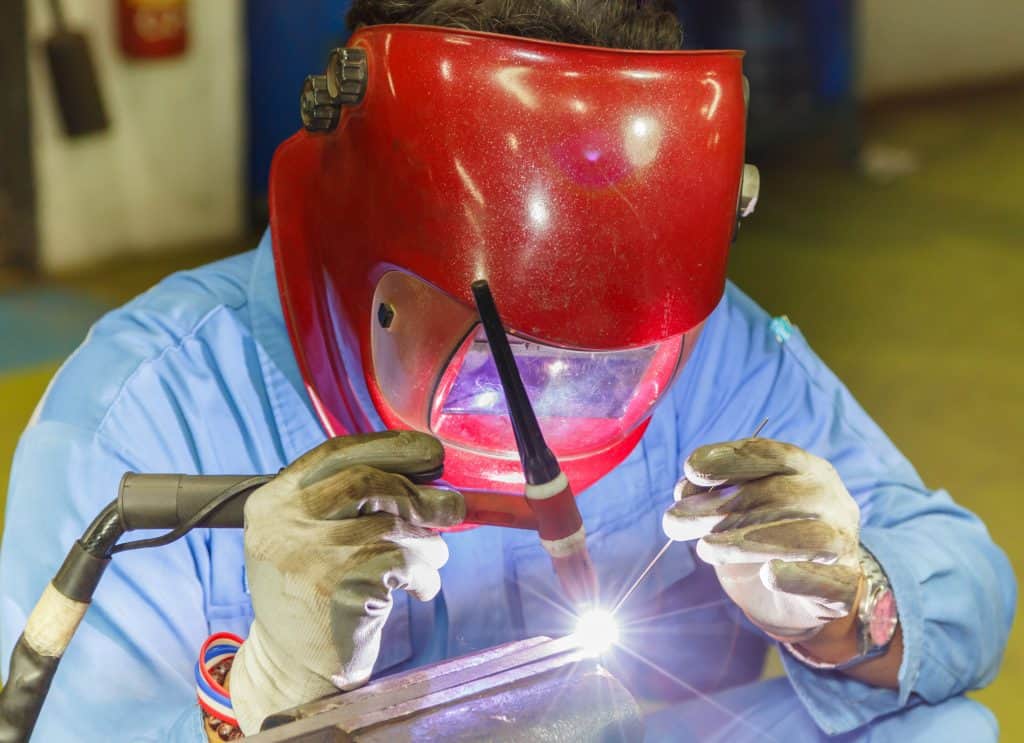
There are some specific pieces of gear you’ll want to keep on you whenever you’re welding. These pieces protect your body, as you’re wearing them, versus others, which are just around you or practices you need to instill in yourself.
- Always use approved helmets. Don’t use helmets that are cracked or broken, as they aren’t safe after excessive damage. You also shouldn’t use just any helmet you find or manage to rig. And never, ever weld without some cover.
Helmets that aren’t rated and approved by safety standards aren’t safe. An unapproved helmet is a cheaper helmet. However, a cheaper won’t protect you as well as a more expensive helmet might. Spend the extra bit to have that peace of mind.
- If you don’t wear a helmet, wear the appropriate hand shields to protect the face, neck, and ears as well as something to protect your head. If you aren’t wearing a helmet, you still need to protect the same major features as a helmet will.
Your face, neck, and ears are the most susceptible to severe burns. These are the spots listed as requiring a trip to the hospital because they’re delicate. The skin on them is soft and thin, compared to toughened callouses on your hands or rough forearm skin.
- Always use dry and hole-free insulated gloves. This means you need to regularly check them for holes, which appear out of what seems like nowhere. It’s far too easy to ignore a small hole until it’s a large hole that caused a significant burn.
Wet insulated gloves won’t protect you. Water makes it easier for the heat to seep right through the insulation and into your hands. If your gloves are wet, stay away from your welding torch as you won’t be able to touch anything hot.
- Wear protective garments such as heavy shirts, pants without cuffs, and durable shoes. Your shirt should be able to handle a few sparks hitting it without it scorching through to you, as should your pants.
Keep the protective garments on, even in the heat. Even when you feel like you’re roasting, you must keep the heavy gloves, pants, and shirt on. Don’t risk welding in shorts, as you’re leaving your legs vulnerable to hot sparks or dropped metal.
What to Keep Away from You to Prevent Welding Burns
There are certain items you need to stay mindful to keep yourself safe. These items are flammable or are unnecessary risks you’re better off avoiding. Here’s a list of some of them:
- Any combustible, such as lighters, matches, fireworks, etc. You’re working with flying sparks, any of which could set off flammable items. It only gets more dangerous with combustible, such as lighters, which could explode when hit with a hot spark.
- Cuffs on your pants or shirts or anything else that could catch flying sparks. Cuffs are nothing but a waiting nest for molten metal and sparks flying in the air, waiting for somewhere to land. This can lead to fires and burns, so avoid them.
- Any grease, fuel, or combustible material. If you’ve just filled up your gas tank, you shouldn’t wear those shoes to the welding job site. Anything flammable that could have seeped into your clothes or shoes should be immediately washed out to avoid fires.
Things to Remember to Prevent Welding Burns
There are hundreds of pieces of gear you can buy to prevent burns from welding, but there are some other things that can help you. These mindsets will save you just as much as the gear will, if not more.
- Be careful what you touch. Plenty of things on the job site are hot, whether you think about it or not. Keep these in mind before you reach out:
- Electrode holders
- Gun tips
- Nozzles
- Works in progress (both yours and your crew members’ projects)
- In cold climates, be aware of heavy clothing. This can offer a more significant risk, as bulkier clothing makes it easier for you to bump into hot things. It’s also harder to realize when your winter coat is on fire versus your thinner summer shirt, so listen and watch your crew member’s backs.
- Use sheet metal screens when needed. Don’t try to be “manly” or “tough.” Always make sure you’re safe when working, using every safety precaution possible.
- Be aware of what’s happening around you. This is an essential piece of welding burn prevention. Make sure you’re observant of everything that’s happening and who’s around you.
The Best Aftercare of Welding Burns
The aftercare of welding burns is something every welder, regardless of rank, should know back and forth. If he doesn’t, he not only puts himself at risk but his entire crew, as he cannot help himself or them. This is especially vital for any foreman or leader of a crew or group.
All foremen should know how to take care of a welding burn and instruct their crew in how to handle one. The basic aftercare of welding burns is simple, as you don’t treat it much differently than a regular burn. The entire process is covered below in depth.
Just as foremen must know how to handle a burn, they must know when to send a crew member to the hospital. Burns can worsen over time, so a foreman must know when to send a crew member to the hospital just in case and not force them to stay when it may be too severe.
Finally, a foreman must understand that a burn takes time to heal. He must recognize when a crew member has pushed it too hard and must have to go to the hospital after the initial trauma. All of these are listed in the sections below.
How to Treat Welding Burns
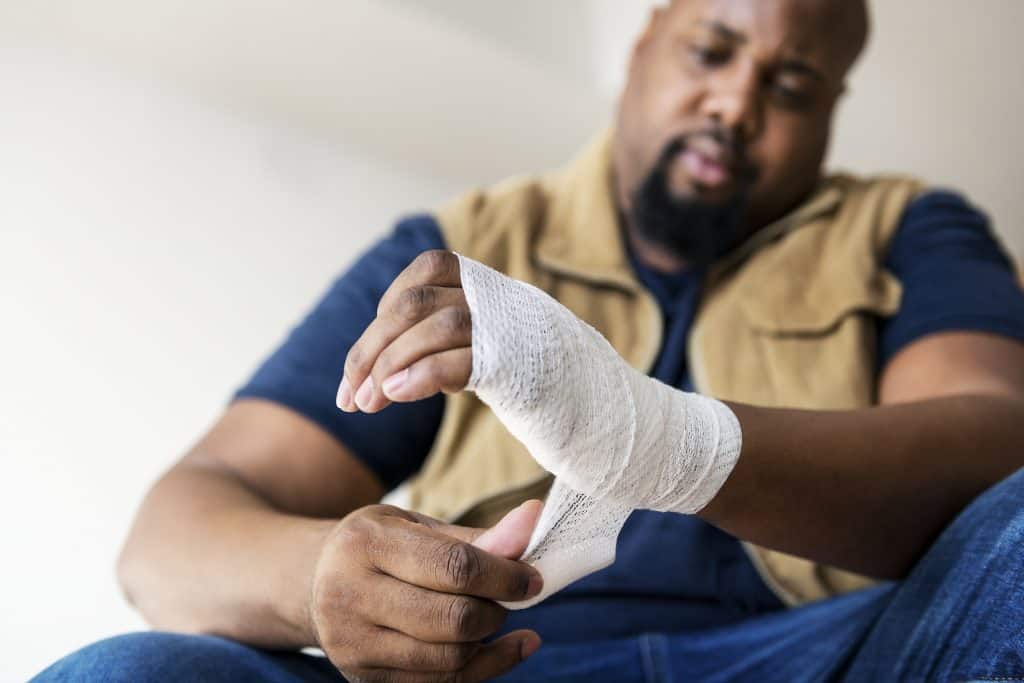
At some point in your career as a welder, you or someone you know will suffer a severe welding burn. While there are many things we can do to prevent this from happening, as we cover below, you must also be prepared for the worst. Here’s a list to go through when it happens:
- Immediately place the burned skin under cool running water. If you wait a while or don’t run it under cold water, the skin cells will continue burning from the residual heat, and your burn will worsen. Hold it there for at least twenty minutes.
- Assess the burn. It’s important to know when you need to go to the hospital and when you don’t. Read the section below listing some indications of when a burn is severe enough to deserve a trip to the hospital.
- Go to the hospital if severe enough! This is one the most important things to note-if your burn is severe enough, you shouldn’t try to tough it out. Serious burns can lead to further damage when left untreated and bad scarring, not to mention the risks of infection.
- If your burn isn’t severe enough to necessitate the hospital, clean the wound. Once you’re sure it isn’t critical, wash your wound under cold water with antibacterial soap. It may sting, but you need to make sure the wound is clean to lower the risk of infection.
- Apply cold packs for pain and to ensure no further damage. Most likely, your burn is going to feel hot to the touch for a while. Make sure to wrap any cold packs in a thin blanket or towel to regulate the cold allowed to hit your skin, or else it may get too cold.
- Follow up with burn creams, multiple daily cleanings, and wrappings. You need to prevent your wound from risking infection, which means you should be cleaning it and changing the dressings at least twice a day, as well as applying a soothing cream.
When Should You Go to the Hospital for Welding Burn?
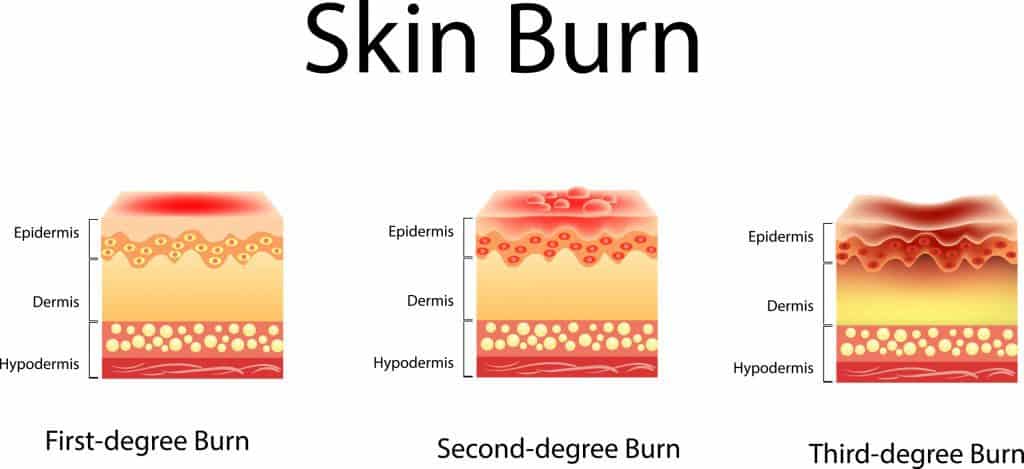
Above, we’ve covered what to do if your burn isn’t severe enough to warrant a trip to the hospital. But how do you know whether you need to go to the hospital or not?
Burns can be hard to initial diagnose in severity, especially if you aren’t a professional. You shouldn’t hesitate to go to the hospital if the burn is: immediately.
- Larger than 3-4 inches
- To the face, hands, feet, eyes, genital areas, or ears
- Blistering in any spot (as 2nd-degree burns do)
- Showing any whitish marks or charring (as 3rd-4th-degree burns do)
Most burns that occur are not serious burns that require intense healing processes. However, there always is that one freak accident you must be prepared for. If any of your crew members are severely burned, you should call an ambulance over attempting to move them yourself.
When to Go to the Hospital During the Healing Process of a Welding Burn
After the initial trauma, your burn can show signs of worsening. Not only can the heat from the burn continue to destroy skin cells, worsening the burn, but the wound can become infected as well. If you notice:
- Blistering occurring
- Intensifying pain
- No visible signs of healing after 3-4 days
- Any signs of infection, including but not limited to:
- Pain increase
- Redness
- Swelling
- Fever
- Liquid leaking or a foul odor
- Beginning to feel hotter to the touch than before
You don’t need to worry about blistering occurring much later than an hour or so after the trauma. If your pain intensifies, make sure it isn’t because you’ve been overusing it. Overdoing it can further damage your skin, making it more open to infection and take longer to heal.
Of course, if you have any worries about your injury, you should either schedule an immediate visit with your doctor or go into urgent care or the emergency room. Especially if you’re concerned about the risk of infection, you should hurry to get it checked by a professional.

